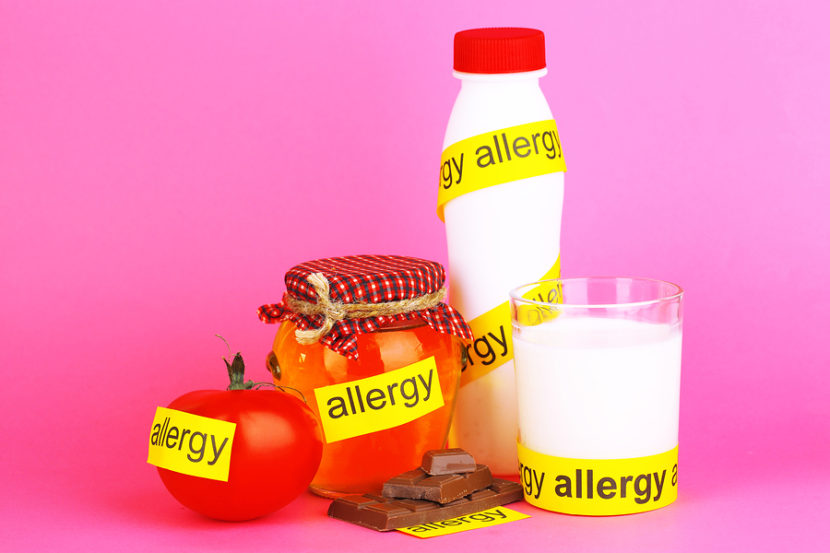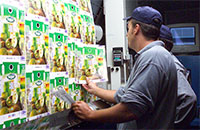“May Contain” Becoming an International Precautionary Standard
By Jaan Koel
In 2012, Health Canada and the Canadian Food Inspection Agency (CFIA) recommended the use of “May Contain” as the preferred precautionary allergen labelling statement for pre-packaged foods. The food industry had previously been using a variety of statements to alert allergic consumers that unintentional allergens could be present in these products.
And the phrase is now on its way to international adoption.
During a public consultation process in Canada in 2010, allergic consumers had noted that multiple statements created confusion and made assessing risk levels difficult. The consensus was that using the single “May Contain” precautionary statement was preferable, and although the CFIA recommendation was considered a positive step, producers are not required to use precautionary statements.
The same approach is being taken in other countries, including Australia, New Zealand, Japan, Switzerland and areas of the European Union (EU).
Cross Contact
Marilyn Allen, a founding member of Anaphylaxis Canada with a consulting practice in the field, says that since the labelling changes were introduced, new concerns have arisen around the potential risks presented by trace allergen co-mingling of crops—soy or mustard in wheat, for example. Even though there are no known safe thresholds, the allergic consumer needs to know if an allergen is present in order to make a safe choice.
Ms. Allen notes that even though there are no known safe thresholds, the allergic consumer needs to know if an allergen is present in order to make a safe choice.
She says the situation could lead to an increase in the use of ‘May Contain,’ which subsequently might reduce the choice of safe foods for many people, and possibly lead allergic consumers to ignore the warning.
VITAL (Voluntary Incidental Trace Allergen Labelling)
Geert Houben is Principal Scientist at TNO, the largest research institute in the Netherlands. He was a leading member of an expert panel that helped develop the scientific basis for VITAL (Voluntary Incidental Trace Allergen Labelling) system, a standardized allergen risk assessment tool for food producers. Like the Health Canada/CFIA program initiative, VITAL allows food producers to assess the impact of allergen cross contact and provide appropriate precautionary allergen product labelling.
He says that after initial development work was carried out and adopted in Australia and New Zealand, an expert panel of Europe`s International Life Sciences Institute (ILSI) also adopted VITAL there.
As in Canada, VITAL is based on a single precautionary statement for incidental trace allergens in foods. In Australia and New Zealand it translates as “May Be Present.”
“We are now trying to bring this further in terms of international acceptance,” explains Houben. “Meanwhile, we see that many companies around the world are…starting to (use) the VITAL approach as their standard.”
Houben says there’s still a long way to go.
“Labelling regulations regarding unintended allergen presence are lacking, and precautionary labelling practices are still far from adequate in many parts of the world,” he says. “There is currently no, or a very poor, correlation between the actual risks of products and the use of precautionary allergen warnings. That’s why we are putting so much effort in the development and enrolment of VITAL.”
Houben adds that he feels the VITAL principles could also be applied to the issue of trace allergen co-mingling of crops.
Future Goals
In Canada, Allen believes that future goals should include:
- establishing threshold levels for allergens
- developing guidance for the food industry on the use or non-use of precautionary statements and
- developing guidelines for the use of “Free from” labelling (i.e. Free from peanuts, Free from gluten, etc.).
“This will not only help the food allergic consumer to minimize risks and… maximize choice, but it will also give the food producers a level playing field if standards are established for precautionary labelled foods that can be followed and audited to,” she says.
About the Author
Jaan Koel, Principal of Koel Communications, is a freelance writer who has been a regular contributor to Global Food Safety Resource (GFSR) but also writes for other leading industry publications like: Food Engineering Magazine, Food in Canada and Grocery Business.
To have more articles like this emailed to your inbox, become a GFSR Member today!

-
 FeaturedRisk management
The Cost of a Breach: What a Cyberattack Could Mean for Food Safety Recalls
FeaturedRisk management
The Cost of a Breach: What a Cyberattack Could Mean for Food Safety Recalls
-
 FeaturedRisk management
Securing the Food Chain: How ISO/IEC 27001 Strengthens Cybersecurity
FeaturedRisk management
Securing the Food Chain: How ISO/IEC 27001 Strengthens Cybersecurity
-
 FeaturedRisk management
Revolutionizing Food Safety Training: Breaking Out of the “Check-the-Box” Mentality
FeaturedRisk management
Revolutionizing Food Safety Training: Breaking Out of the “Check-the-Box” Mentality
-
 GFSI Standards
GFSI 2025: Building Trust, Tech-Forward Solutions, and Global Unity in Food Safety
GFSI Standards
GFSI 2025: Building Trust, Tech-Forward Solutions, and Global Unity in Food Safety
-
 FeaturedFood Safety
Integrated Pest Management: Strategies to Protect Your Brand’s Reputation
FeaturedFood Safety
Integrated Pest Management: Strategies to Protect Your Brand’s Reputation
-
 FeaturedFood Safety Culture & Training
No Open Door Policy: Challenges That Impact Pest Control in Food Processing Plants
FeaturedFood Safety Culture & Training
No Open Door Policy: Challenges That Impact Pest Control in Food Processing Plants




